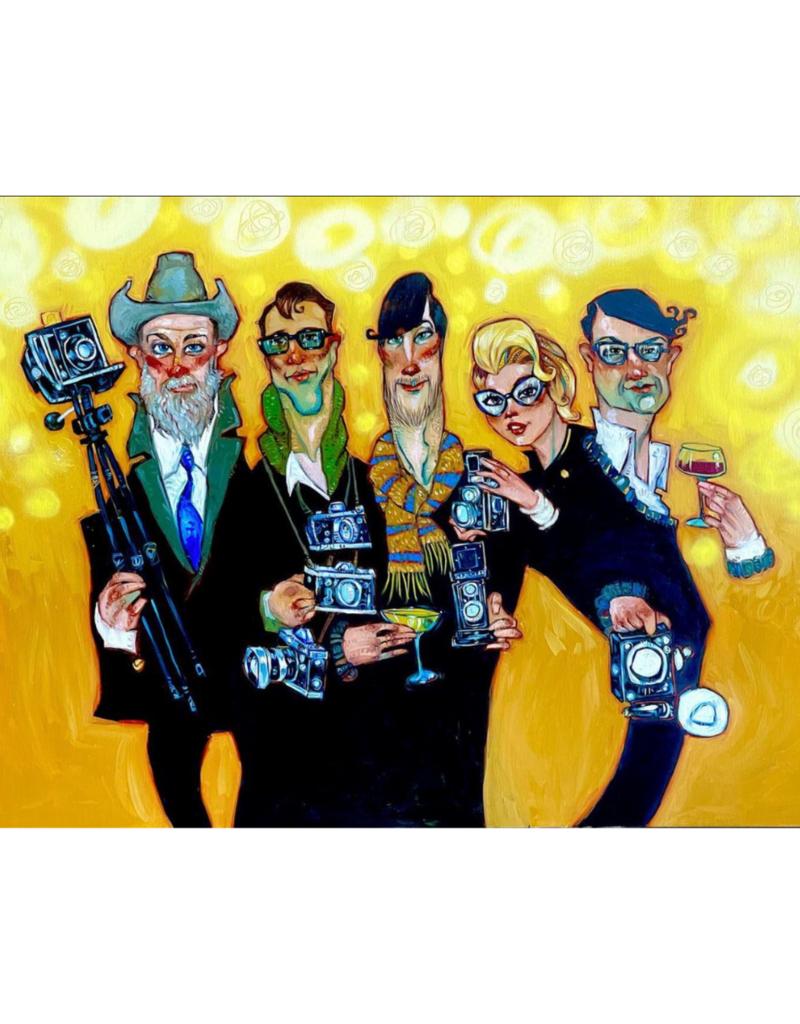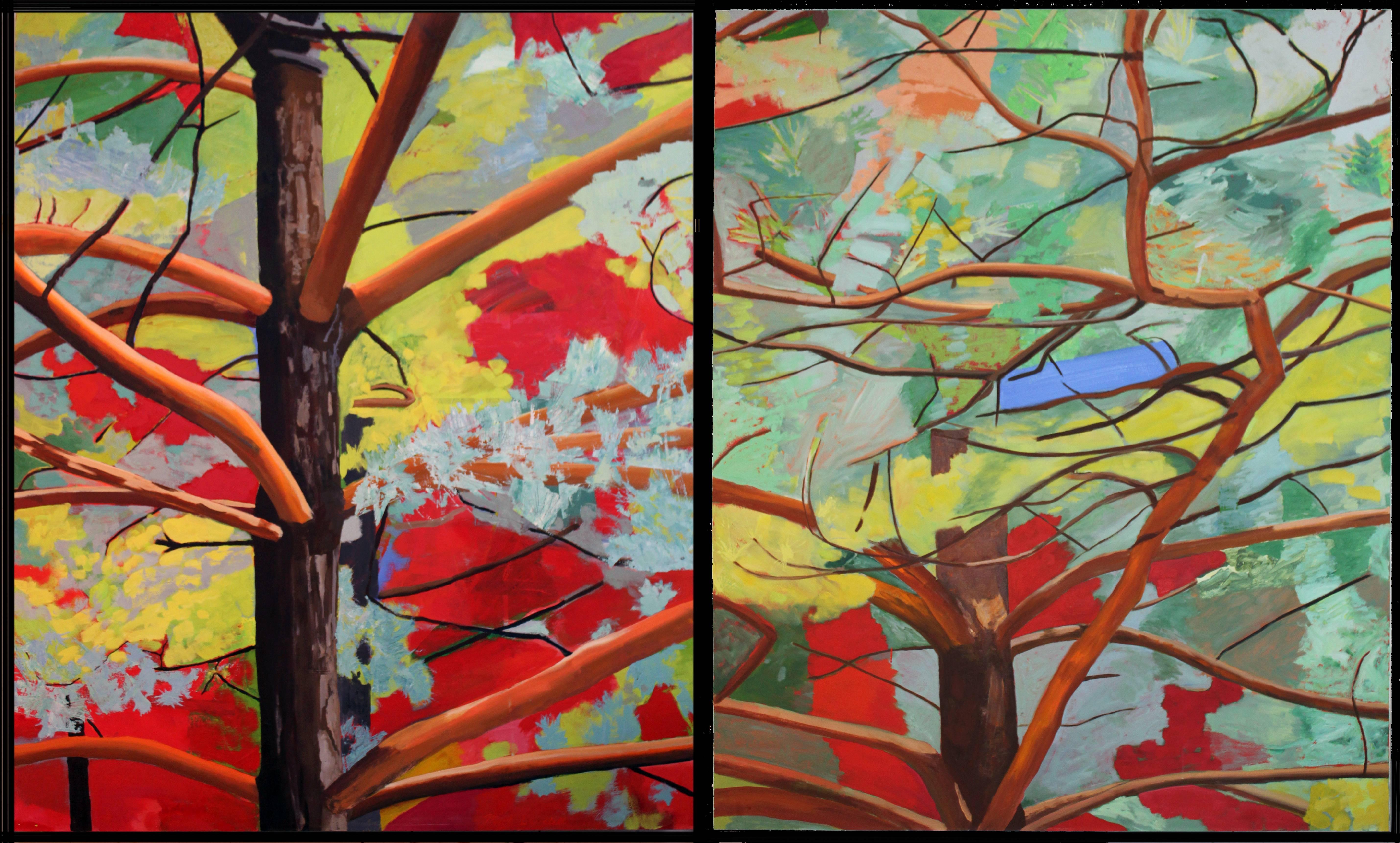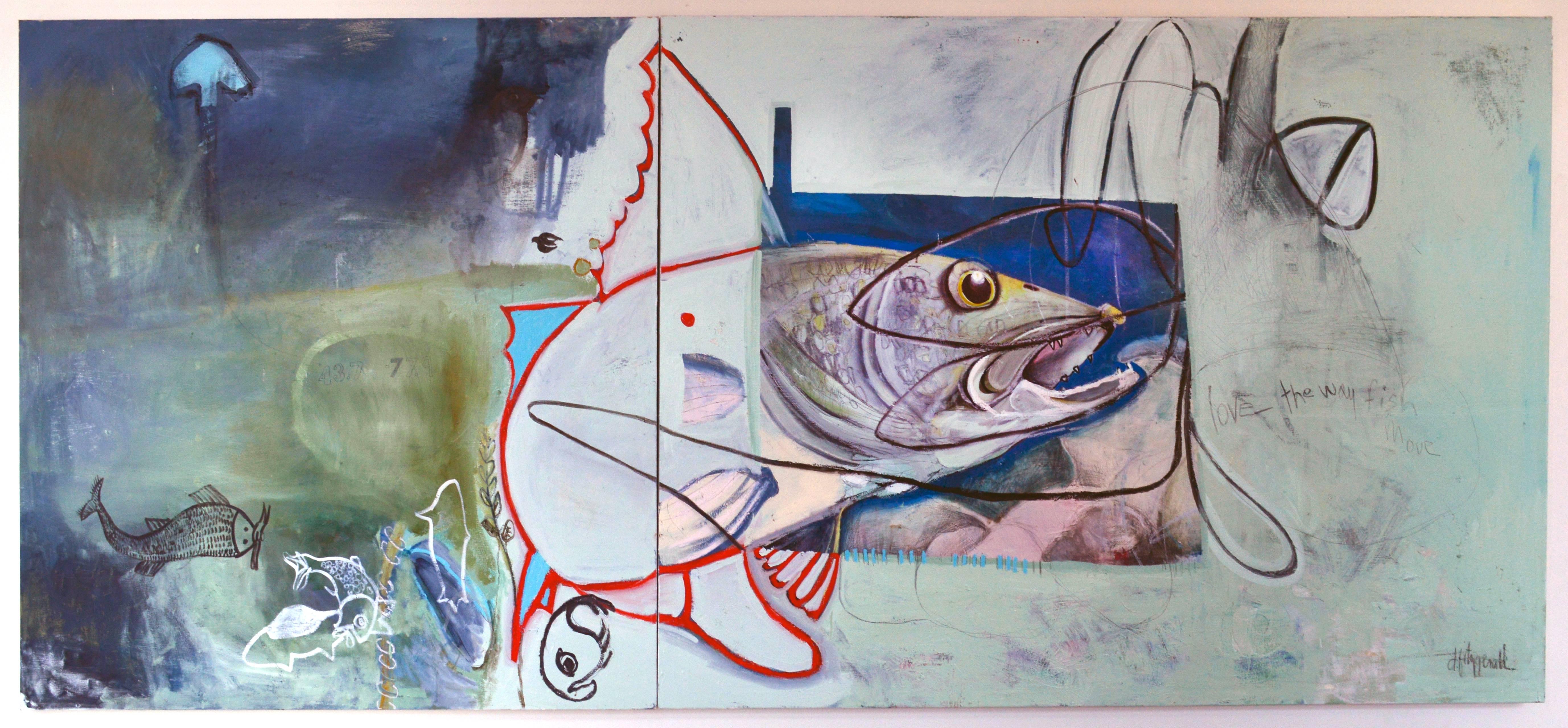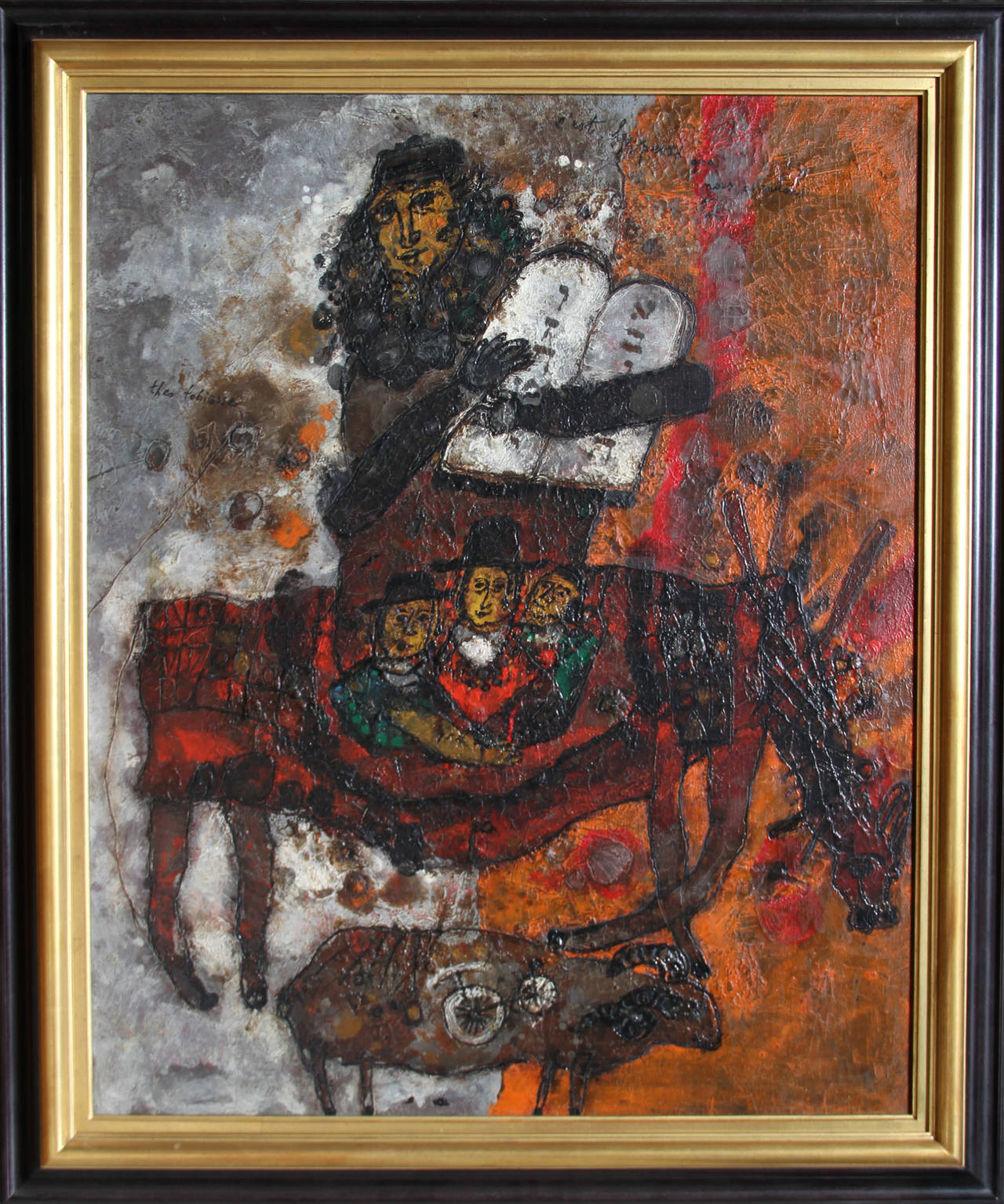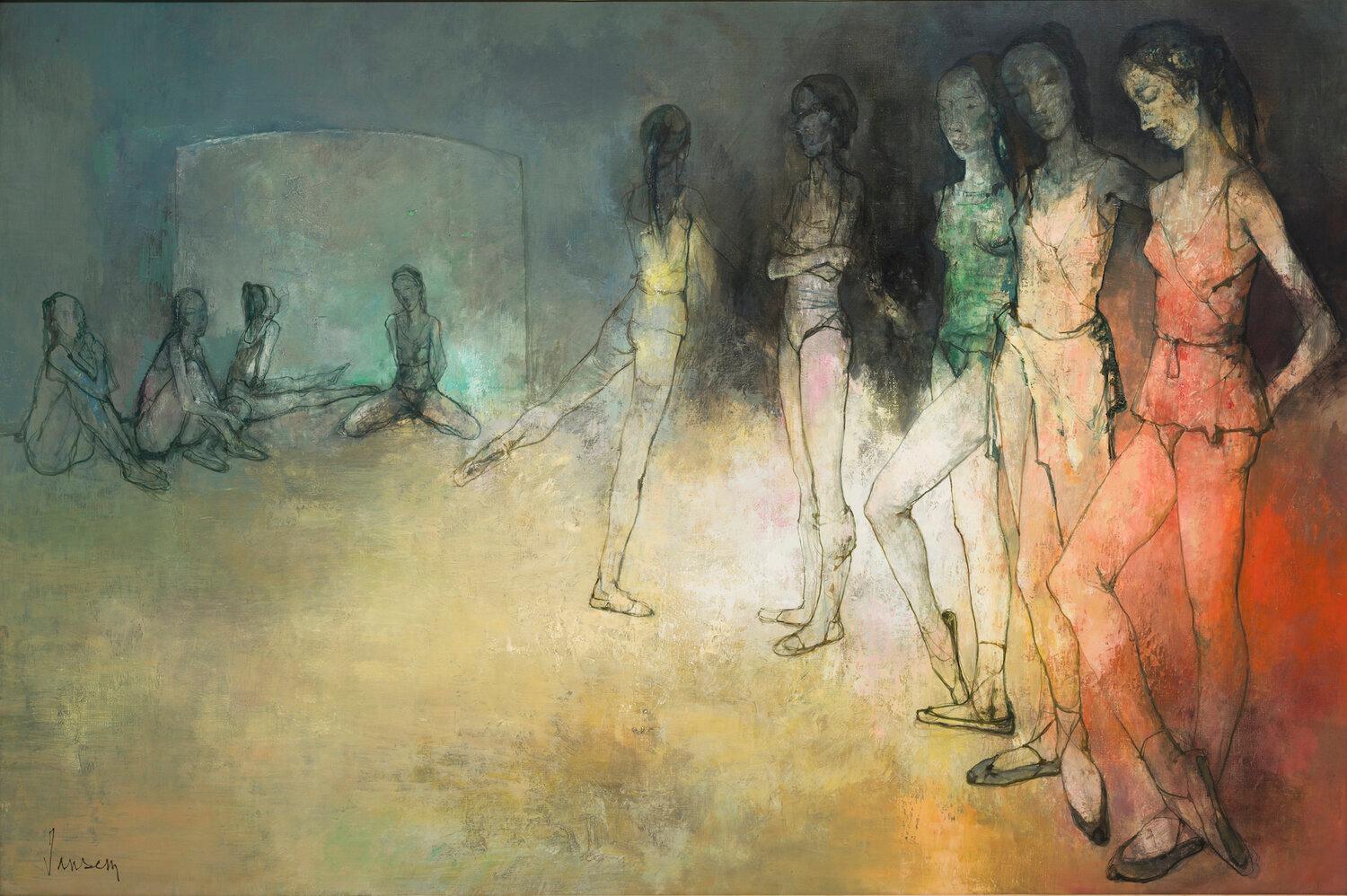Items Similar to Michael Patrix Oil Painting "Head of Woman"
Want more images or videos?
Request additional images or videos from the seller
1 of 4
Michael PatrixMichael Patrix Oil Painting "Head of Woman" 1955
1955
About the Item
"Head of Woman" is a wonderfully exciting example of Mid-20th century Expressionist art. This vibrant portrait is reminiscent of Matisse's Fauvist female portraits. The intense veridian green paint sets an emotional tone to the figure and overall painting while the 1950s feminine hair style with bangs and ponytail portrays youth, vitality and exuberance.
Provenance show at Saginaw Art Museum 59.5.5 - Saginaw, Michigan on verso.
Michel Patrix was a French painter who was born in 1917. He was most active during the 1940s thru 1960s. This painting is in excellent condition. The frame measures 14.5"h x 11" and shows some signs of wear.
- Creator:Michael Patrix (1917 - 1973)
- Creation Year:1955
- Dimensions:Height: 9 in (22.86 cm)Width: 6 in (15.24 cm)
- Medium:
- Movement & Style:
- Period:
- Condition:
- Gallery Location:Detroit, MI
- Reference Number:1stDibs: LU128615551151
About the Seller
5.0
Vetted Seller
These experienced sellers undergo a comprehensive evaluation by our team of in-house experts.
Established in 2014
1stDibs seller since 2019
96 sales on 1stDibs
Typical response time: 4 hours
- ShippingRetrieving quote...Ships From: Detroit, MI
- Return PolicyA return for this item may be initiated within 14 days of delivery.
More From This SellerView All
- Fanny Rabel Figurative Oil Painting Soulful, PrayerfulBy Fanny RabelLocated in Detroit, MISALE ONE WEEK ONLY UNTITLED by Fanny Rabel a Mexican artist who was born in Poland in 1922 is a soul wrenching work depicting among other things, the children killed by Nazi bombing in Spain during the Second World War. The lavender and purple surrounding the seated female figure and the kneeling child suggest both grief for the innocents' deaths and the prayers being offered for an end to the carnage. The bright gold and red can be read as either explosions or the hopeful light of redemption after death. Like Picasso's Guernica from 1937, this painting from 1965 can stand as a powerful anti-war statement. Numerous key galleries and museums such as Morton Auctions, Cerro de Mayka have featured Fanny Rabel's work in the past. Her anti-Nazi and anti-Fascism politics resulted in her participation in a mural called Retrato de la Burguesía in 1940 for the Sindicato Mexicano de Electricistas building on Alfonso Caso Street in Mexico City. Rabel met a group of exiled Spaniards in Mexico along with Antonio Pujol, who invited her to take part in a mural project headed by him, David Alfaro Siqueiros, Joseph Renau, Luis Arenal, Antonio Rodríguez Luna and Miguel Prieto. The artist died in 2008. Fanny Rabel born August 27, 1922, in Poland born Fanny Rabinovich, was a Polish-born Mexican artist who is considered to be the first modern female muralist and one of the youngest associated with the Mexican muralism of the early to the mid-20th century. She and her family arrived in Mexico in 1938 from Europe and she studied art at the Escuela Nacional de Pintura, Escultura y Grabado "La Esmeralda", where she met and became friends with Frida Kahlo. She became the only female member of “Los Fridos” a group of students under Kahlo’s tutelage. She also worked as an assistant and apprentice to Diego Rivera and David Alfaro Siqueiros, painting several murals of her own during her career. The most significant of these is "Ronda en el tiempo" at the Museo Nacional de Antropología in Mexico City. She also created canvases and other works, with children often featured in her work, and was one of the first of her generation to work with ecological themes in a series of works begun in 1979. She is considered to be the first female muralist in Mexico. She was an assistant to Diego Rivera while he worked on the frescos for the National Palace and an apprentice to David Alfaro Siqueiros. Her most important mural is Ronda en el tiempo located in the Museo Nacional de Antropología, which was created from 1964 to 1965. She also created murals at the Unidad de Lavaderos Público de Tepalcatitlán (1945), Sobrevivencia, Alfabetización in Coyoacán in 1952 Sobrevivencia de un pueblo at the Centro Deportivo Israelita (1957) Hacia la salud for the Hospital Infantil de México (1982), La familia mexicana at the Registro Público de la Propiedad (1984) (which Rabel preferred to title Abolición de la propiedad privada) and at the Imprenta Artgraf. In collaboration with other artists, she participated in the creation of the murals at the La Rosita pulque bar (disappeared) and at the Casa de la Madre Soltera. She entered the Escuela Nacional de Pintura, Escultura y Grabado "La Esmeralda" shortly after it was established in 1942, taking classes with José Chávez Morado, Feliciano Peña and Frida Kahlo, with whom she became close friends. She changed her last name from Rabinovich to Rabel during her career. Rabel married urologist Jaime Woolrich and had two children Abel and Paloma Woolrich, both of whom became actors. The first exhibition of her work was in 1945 with twenty-four oils, thirteen drawings, and eight engravings at the Liga Popular Israelita with Frida Kahlo writing the presentation. In 1955, she had an individual exhibition at the Salón de la Plástica Mexicana. She had a large exhibition at the Museum of the Palacio de Bellas Artes to commemorate a half-century of her work. Her last exhibition was in 2007 at the Universidad Autónoma Metropolitana. Her work can be found in collections in over fifteen countries including those of the New York Public Library, the Library of Congress in Washington, D.C., the Royal Academy of Denmark, the National Library in Paris, the Casa de las Américas in Havana, the Benemérita Universidad Autónoma de Puebla and the Museo de Arte Moderno in Mexico City. A retrospective of her work after her death called Retrospectiva in Memoriam, Fanny Rabel (1922-2008) was held at the Museum of the Universidad Popular Autónoma del Estado de Puebla . She is considered to be the first modern female muralist in Mexico although she also did significant work in painting, engraving, drawing, and ceramic sculpture. Her work has been classified as poetic Surrealism, Neo-expressionism and is also considered part of the Escuela Mexicana de Pintura (the dominant art movement of the early to mid 20th century in Mexico) as one of the youngest muralists to be associated with it along with Arnold Belkin and José Hernández Delga. Rabel was more drawn to depicting mankind’s pain rather than happiness, sharing other Mexican muralists' concerns about social injustice. However, she stated to Leopoldo Méndez that she could not create combative works, with clenched fists and fierce faces, and she wanted to leave the Taller de Gráfica Popular. Méndez convinced her to stay, saying that more tender images are important to political struggle as well. Children with Mexican faces...Category
1960s Expressionist Figurative Paintings
MaterialsOil, Canvas
- "Untitled Female"By Richard WilsonLocated in Detroit, MI“Untitled Female" is a colorful piece by Richard Wilson that has meaning for native Detroiters through use of the blues and oranges - their "Tiger" baseball team's colors and the "D"...Category
2010s Expressionist Figurative Paintings
MaterialsCanvas, Acrylic
- "Untitled Female" Clothed Female Figure, Bright Colors, Detroit SymbolsBy Richard WilsonLocated in Detroit, MI“Untitled Female" is a colorful piece by Richard Wilson that has meaning for native Detroiters through use of the blues and oranges - their "Tiger" baseball team's colors and the "D"...Category
2010s Expressionist Figurative Paintings
MaterialsCanvas, Acrylic
- Richard Wilson Figurative Female Iconic Detroit SymbolsBy Richard WilsonLocated in Detroit, MI“Untitled Female" is a colorful piece by Richard Wilson that has meaning for native Detroiters through use of the blues and oranges - their "Tiger" baseball team's colors and the "D"...Category
2010s Expressionist Figurative Paintings
MaterialsCanvas, Acrylic
- "Mental Capacity" Mixed Media, Fictional Image of African American, Iconic ColorBy Onzie NormanLocated in Detroit, MI"Mental Capacity" is a fictional experience whereby an African American man from the 1970s discovers his artistic side. It is generally known that most people are either left brain o...Category
2010s Expressionist Mixed Media
MaterialsResin, Paper, Acrylic
- Robert Andrew Parker Watercolor "Seated Figure #2" Partially Nude FemaleBy Robert Andrew ParkerLocated in Detroit, MI"Seated Figure #2" is distinctly vibrant and sexual with a feminine-mystique glow in this stunning example of Robert Parker's Expressionist watercolor. The blue, pink and black creates a brilliant exploding power that engages the viewer immediately leading to the gorgeously rendered partially nude...Category
Late 20th Century Expressionist Figurative Paintings
MaterialsPaper, Watercolor
You May Also Like
- No Photos PleaseBy Todd WhiteLocated in Toronto, ON42" x 31" Unframed Original - Oil on Canvas Hand Signed by Todd White Todd white captures restaurant, night and Hollywood scenes with contrasting colors serving the viewer’s eyes a...Category
2010s Expressionist Figurative Paintings
MaterialsCanvas, Oil
- HavenBy Mark LavatelliLocated in Buffalo, NYAn original oil on canvas diptych by American contemporary artist Mark Lavatelli created in 1996. 72" X 122"Category
1990s Expressionist Figurative Paintings
MaterialsCanvas, Oil
- They found the pike but it wasn’t aloneBy Dorothy FitzgeraldLocated in Buffalo, NYAn original oil, oil stick and charcoal diptych painting on canvas by Contemporary female artist Dorothy Fitzgerald. This monumental work measures 60" (h) x 120" (w) This work was featured in the recent exhibition of The Corridors Gallery at Hotel Henry...Category
2010s Expressionist Figurative Paintings
MaterialsCanvas, Mixed Media, Oil
- C'est le Passe que Nous AttendonsBy Théo TobiasseLocated in Long Island City, NYAn oil painting by Theo Tobiasse from 1967. An expressionist-style textural painting of intensely dark and vivid color palette. Inspired from the artist's personal experiences of the...Category
1960s Expressionist Figurative Paintings
MaterialsOil, Canvas
- Le triomphe de la mort, 2000, oil on canvas by Jean JansemBy Jean JansemLocated in Carouge GE, GEJean Jansem (1920-2013) Le triomphe de la mort, 2000 Huile sur toile Signée en bas à gauche et à droite 150 x 200 cm Bibliographie: Cette oeuvre est enregistrée dans les archives de l’Association des Amis de Jean Jansem. Figurera dans le catalogue critique de l’oeuvre de Jean Jansem actuellement en préparation par l’association des amis de Jean Jansem Historique: L’indigence d’après-guerre et la difficulté inhérente de trouver les matériaux adéquats et/ou habituels, telles les couleurs, très onéreuses alors, ont poussé les artistes figuratifs de l’après-guerre, en corrélation avec les préoccupations de l’époque, à redéfinir les paradigmes de la représentation. Il n’est plus question de chercher un sens mais bien pour les artistes d'étudier l’objet pour son intérêt formel, sa qualité intrinsèque. Le regard de l’artiste devient analytique et dépeint alors l’objet pour ce qu’il est et non plus pour son pouvoir évocateur ou symbolique. La nature morte n’est plus une invitation sensuelle à la ripaille, la pomme ou la pêche n’évoque aucune envie de croquer, la cruche aucune ivresse, la volaille...Category
Late 20th Century Expressionist Figurative Paintings
MaterialsCanvas, Oil
- La salle de répétition de l'opéra de Paris, 1968, oil on canvas by Jean JansemBy Jean JansemLocated in Carouge GE, GEJean Jansem (1920-2013) La salle de répétition de l’Opéra de Paris, 1968 Huile sur toile Signée en bas à gauche 130 x 195 cm Provenance: Wally Findlay Galleries, New York Bibliographie: Cette oeuvre est enregistrée dans les archives de l’Association des Amis de Jean Jansem. Figurera dans le catalogue critique de l’oeuvre de Jean Jansem actuellement en préparation par l’association des amis de Jean Jansem Historique: 1964: c’est l’inauguration du nouveau plafond du Palais Garnier par Marc Chagall commandé par André Malraux alors ministre chargé des affaires culturelles. Commande qui fera couler beaucoup d’encre entre les partisans du modernisme et les tenants du conservatisme. Malraux tiendra bon, si ce n’est une légère concession: pour éviter de détruire l'ancien plafond et son décor, il sera masqué par une toile amovible de quelques 240m2 réalisée par Chagall dans les ateliers des Gobelins puis tendue par-dessus. Cette commande, autant acte politique que intellectuel, intervient à une époque où Malraux, convaincu que l’art contribue au rayonnement international de la France, soutiendra notamment les commandes du Mobilier national dont Pierre Paulin sera l’une des grandes figures, et où la CGT (Compagnie générale transatlantique) lancera un de ses plus gros chantiers avec le mythique paquebot France...Category
Late 20th Century Expressionist Figurative Paintings
MaterialsCanvas, Oil
Recently Viewed
View AllMore Ways To Browse
Head Of Woman
Head Of A Woman
Mid Century Art Head
Female Head
Matisse Style Of
1960s Female
Matisse Style Painting
Expressionist Head Painting
Head Of Youth
Fauvist Style Paintings
Matisse Woman
1950s Figural Oil Paintings
Oil Woman 1960s
Woman With Green Hair
1940s Woman Portrait
Green Bang
1950s Female Portrait
Mid Century Fauvist
